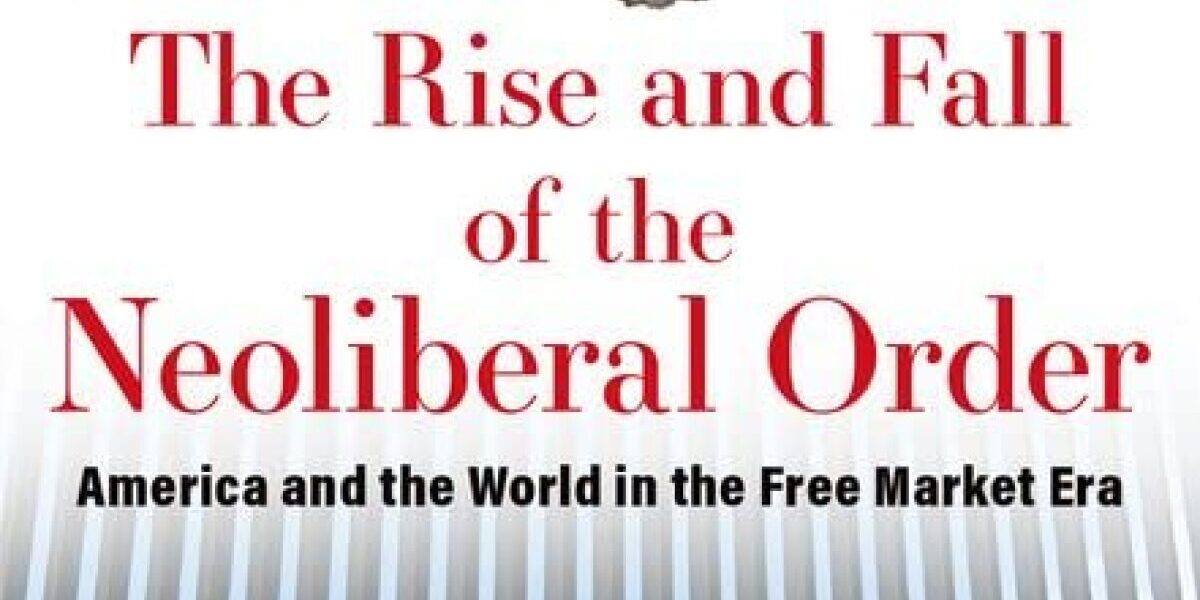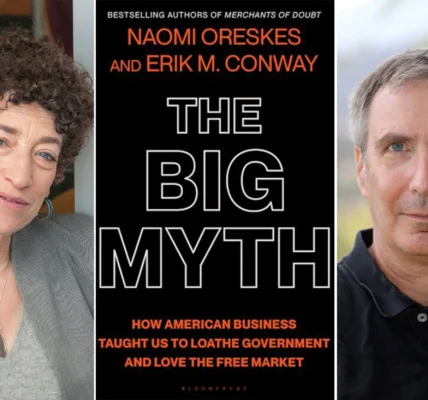Gary Gerstle’s The Rise and Fall of the Neoliberal Order explores the emergence, dominance, and fragmentation of neoliberalism as the guiding political-economic paradigm in American life from the 1970s through the 2010s. Gerstle approaches this challenge through the framework of “political orders,” a concept he co-developed in The Rise and Fall of the New Deal Order (1989), where ideologies, institutions, and coalitions coalesce into dominant governing logics. A seasoned historian and professor at the University of Cambridge, Gerstle is a leading scholar of modern American political development. His method is deeply historical, integrating intellectual history with political science and international relations. The book follows the intellectual tradition of the “new political history,” emphasizing structures, institutions, and ideological transformation over electoral cycles. Its structure—two parts devoted to the New Deal and Neoliberal Orders—traces ideological succession, showing how one order’s collapse precipitated the next.
Gerstle’s central thesis is that neoliberalism became America’s dominant political order by the 1990s, uniting figures as disparate as Ronald Reagan and Bill Clinton under a shared faith in markets, deregulation, and globalization. He argues this consensus was not just elite-driven but resonated widely because of its promise of personal liberation, entrepreneurial opportunity, and American exceptionalism. By situating neoliberalism as both a break from and a successor to New Deal liberalism, Gerstle captures its historical novelty and political reach. In light of recent events—populist revolts, economic inequality, and democratic backsliding—this book explains the ideological scaffolding that once sustained bipartisan consensus but now appears to be eroding.
The book originated in academic collaborations and public lectures responding to the eclipse of the New Deal order. Gerstle refined its ideas across workshops at Cambridge, Oxford, and Harvard, as well as a pivotal 2015 conference commemorating the Fraser-Gerstle volume on the New Deal order. His guiding question is both retrospective and diagnostic: How did neoliberalism become so dominant, and what conditions led to its breakdown? Drawing on U.S. domestic and international history, Gerstle also maps the transnational dimensions of neoliberalism, from Vienna and Geneva to Beijing and Baghdad, giving the book impressive geographic breadth and a multidimensional scope.
Gerstle connects neoliberalism to major themes like Cold War geopolitics, globalization, deindustrialization, class compromise, and moral politics. He argues that neoliberalism triumphed not only because of elite advocacy, but because it offered emancipatory promises aligned with post-1960s desires for freedom—from institutions, regulation, and hierarchy. This ideological flexibility allowed neoliberalism to absorb both conservative and countercultural impulses. Importantly, Gerstle rejects simplistic analogies between neoliberalism and classical liberalism, arguing instead that neoliberalism is a rearticulation of liberalism in the post–Cold War era, emerging not as a return but as a reworking shaped by global capitalism’s victory over Soviet communism.
Chapter 3, “Beginnings,” offers a vivid ideological genealogy of neoliberalism. Here, Gerstle traces its intellectual lineage from Hayek and Mises to Reagan and Thatcher, but also emphasizes the tactical reshaping of liberal ideals—especially liberty and individualism—into pro-market arguments. The chapter exposes how Reagan reanimated classical liberal language to mask the coercive elements of neoliberal discipline. Gerstle’s lens here is intellectual-historical, showing how market ideology was not merely inherited but reinvented to fit a new global and domestic context.
In Chapter 6, “Hubris,” Gerstle analyzes the emotional and symbolic appeal of neoliberal globalization under George W. Bush. Through this psychological and cultural lens, he shows how the rhetoric of freedom, post-racial progress, and entrepreneurial identity papered over rising inequality and mass incarceration. Gerstle connects this mythos to post-9/11 nationalism and Bush’s attempts to export neoliberal ideals to Iraq. The result is a persuasive interpretation of how neoliberalism blurred moral self-conception with consumer freedom and cosmopolitan identity, even as domestic divisions deepened.
Chapter 4, “Ascent,” explores Bill Clinton’s role in institutionalizing neoliberalism through trade liberalization, financial deregulation, and welfare reform. Using an economic-policy lens, Gerstle argues Clinton functioned as a “Democratic Eisenhower,” smoothing bipartisan consensus around market primacy. The chapter highlights how the post–Cold War moment—free from the pressures of Soviet containment—allowed capital to shed the constraints of New Deal-era compromise. In contrasting Clinton with Reagan, Gerstle shows how centrist liberalism abandoned social-democratic aspirations in favor of technocratic market governance.
While the book succeeds in presenting a sweeping narrative, it occasionally sacrifices complexity for coherence. The cultural dimensions of neoliberalism—especially in media and religion—are gestured at but not deeply developed. For instance, more attention to how neoliberalism shaped education, social media, or entertainment could have strengthened the account of its psychological and affective appeal. A few chapters also rely heavily on secondary literature, and the absence of more diverse archival voices can flatten the popular dimensions the book seeks to emphasize.
Though Gerstle critiques both left- and right-wing figures, the book often characterizes conservative opposition without direct engagement. The internal diversity of conservative and libertarian thought is somewhat underexplored—particularly the intellectual fissures between religious traditionalists, economic libertarians, and national populists. For example, deeper discussion of paleoconservatism or neoreactionary thought might have better contextualized the post-2010 rightward drift. Engaging directly with these materials could have sharpened Gerstle’s arguments and preempted critiques of ideological simplification.
The book is heavily centered on American actors and events, with only limited discussion of how neoliberalism was shaped by and responded to global South actors, decolonization, or international labor movements. This U.S.-centric focus is partially compensated by references to global policy shifts, but the inclusion of more voices from Latin America, Asia, or Africa would have complicated the narrative of neoliberalism’s “triumph” and offered a fuller view of its consequences. The reliance on elite political figures—presidents, advisors, think tanks—also means that bottom-up social movements are sometimes peripheral.
The Rise and Fall of the Neoliberal Order is a masterclass in historical synthesis, mapping the ideological arc of neoliberalism from its insurgent beginnings to its contested decline. Gerstle’s integration of economic, political, and cultural analysis offers a powerful framework for understanding the recent past—and the current moment of ideological rupture. Its interdisciplinary scope and accessible prose make it a valuable contribution for scholars, students, and anyone seeking to understand how neoliberalism became “common sense”—and why that common sense is now unraveling. While the book could have gone deeper in its global and cultural analysis, it remains one of the most compelling narratives of neoliberalism’s lifecycle to date.



